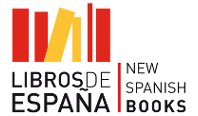New Spanish Books: The online guide of titles from Spanish publishers and literary agents with rights for translation in the UK. To consult titles available in other markets please click on the above links.
New Spanish Titles - Spring 2011
-
An Ecnomic-Financial Business Diagnostic
 Publisher: ESIC Editorial
Publisher: ESIC Editorial -
dialogue of painting
 Publisher: EDICIONES AKAL SA
Publisher: EDICIONES AKAL SA -
Biographical dictionary
 Publisher: Sepha
Publisher: Sepha -
They tell me you are dead
 Publisher: Algaida Editores
Publisher: Algaida Editores -
Dino & Pablo. Prehistoric Games
 Publisher: Bang Ediciones
Publisher: Bang Ediciones -
Making Design Work
 Publisher: Index Book
Publisher: Index Book -
The room tuner
 Publisher: Libros del Silencio
Publisher: Libros del Silencio -
The soul of the stones
 Publisher: Editorial Planeta S.A.
Publisher: Editorial Planeta S.A. -
love and its forms
 Publisher: Península
Publisher: Península -
Walking the Way of St James
 Publisher: El País-Aguilar
Publisher: El País-Aguilar
